ROCKLEY MEMORIAL PARK
Park Road, Radcliffe on Trent, NG12 1AR
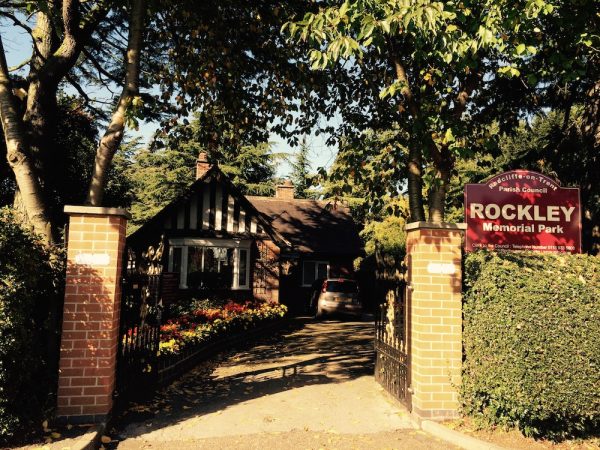
Radcliffe on Trent is the home of Rockley Memorial Park, dedicated to local men who died in the Great War. Mr. Lisle Rockley, whose son William was killed at Ypres in 1917, bought the land in the 1920s, created the park and adjacent cliff walk then presented the site to the village in 1927. The glorious park can be ranked among Britain’s outstanding war memorials.
Rockley Memorial Park offers its visitors a magnificent array of plants and shrubs, including rhododendron, azalea and winter jasmine. Majestic trees tower over the landscaped lawns: cedars, conifers and copper beech, being among them.
An oval path circling the central lawns has two exits leading to the Cliff Walk, which in turn leads to the cliffs beneath and River Trent. The wide paths make it easily accessible for buggies, wheelchairs and mobility scooters.
Click here to read the history of Rockley Memorial Park
Click here to read about William Rockley
Click here to read about Rockley Memorial Park Commemorative events, October 2017
Directions
Directions: From Radcliffe on Trent village centre: turn at the mini roundabout by the Co-op store and travel up Shelford Road towards Shelford. The main entrance is from Park Road, which is 5th on the left of Shelford Road, after crossing the railway bridge. There is no car park – please have consideration for local residents when parking in side streets. The park is open in daylight hours and entrance is free.
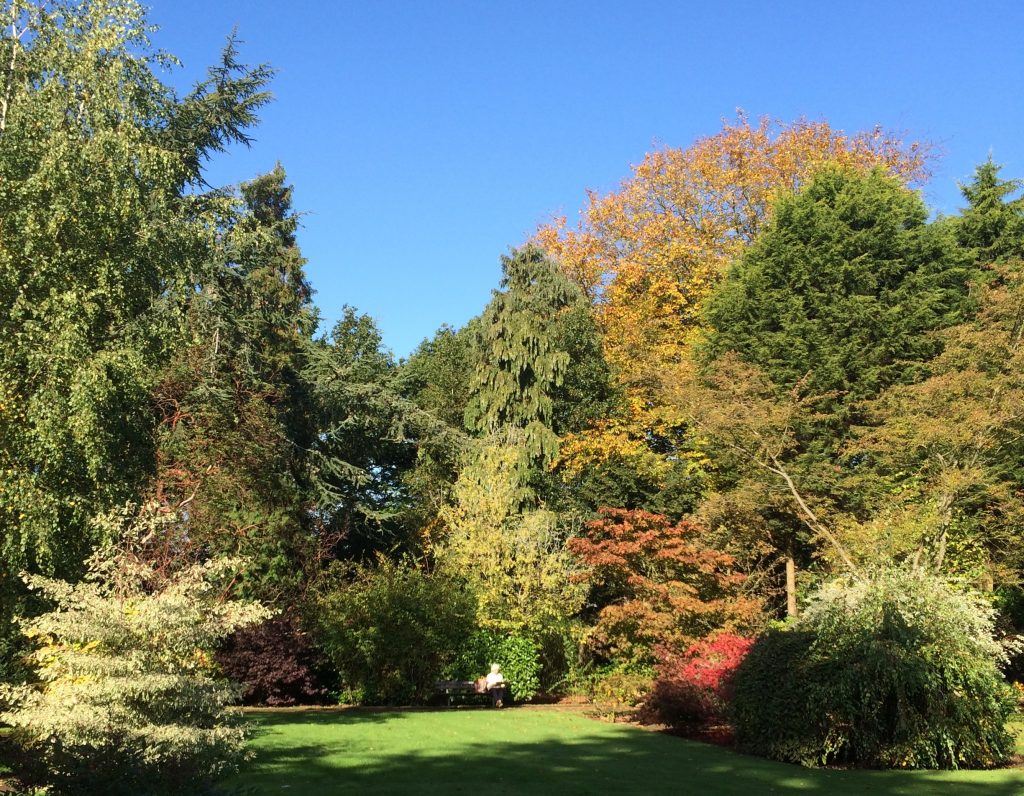
Mr. Rockley’s vision of a living memorial has developed over the past ninety years, particularly through the work of ground staff and five resident head gardeners: George Stubbings 1927–1962, Jack Hannam 1962–1977, Jim Lambert 1977–2004, Aiden Herrett 2004 to 2016 and Jenny Ellis from 2016 to 2019. Each head gardener has brought their unique style to the park, shaping its character over the decades.
Radcliffe Parish Council, Cityspace Greening and Rushcliffe Borough Council have enhanced the park in recent years by planting trees, shrubs and flowers. Rowan, daffodil, snowdrop, dogwood, primula, hellebore and various perennials have added texture and colour. Stump stepping stones and a willow tunnel now nestle among trees backing on to the Cliff Walk. Eight wooden sculptures, created by young people from the village working with Positive Futures, are secreted in the woodland walk near the main entrance.
A pavilion, built in the 1920s, houses the original plaque describing Lisle Rockley’s gift of the park.
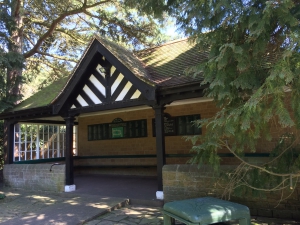
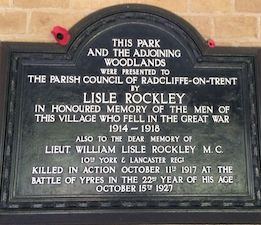
The Pavilion was extensively refurbished in 2016 and additional turf was inserted round the perimeter of the oval lawn. The glasshouses were cleaned, re-glazed and new cold frames and storage sheds were installed.
Cliff Walk
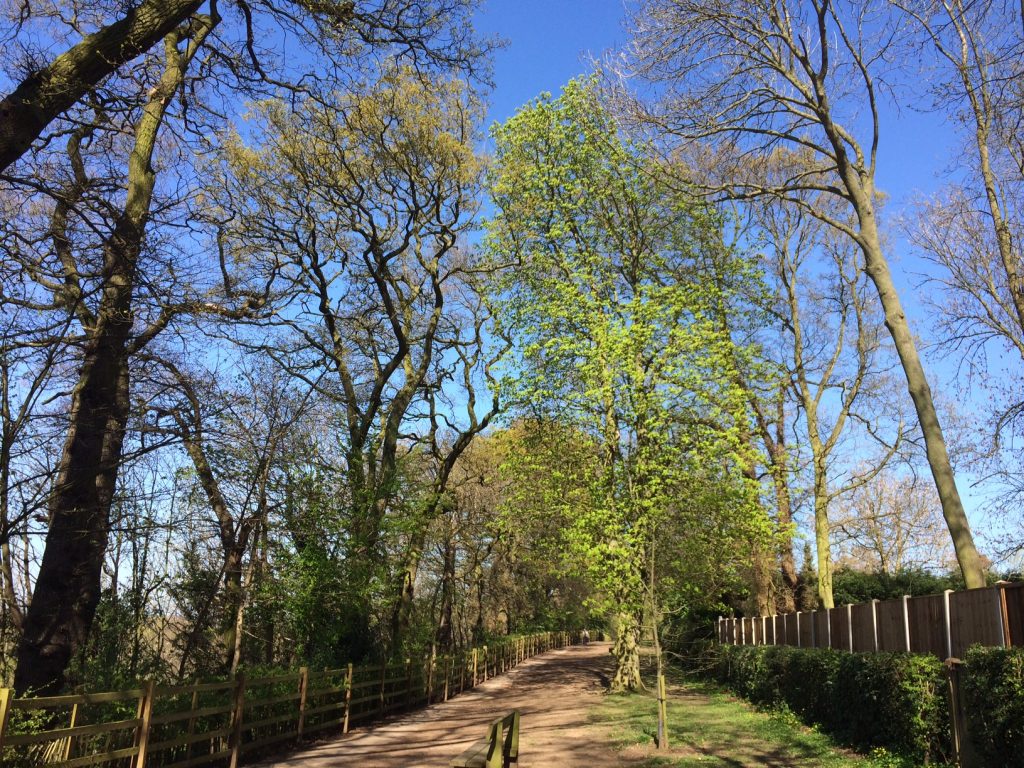
On leaving the formal park, visitors come to a mile long walk along the cliff top which is shaded by a variety of trees including oak, beech and lime. Wide paths provide good access. The walk is much enjoyed by all ages and is a favourite spot for dog walkers.
Walkers, wheelchair, mobility scooter and buggy users can reach the Cliff Walk from the Memorial Park itself or from four other access points in Radcliffe on Trent, all of which are on the left of Shelford Road travelling out of the village. Stanford Gardens, the nearest access point from the shops is reached via Oaktree Avenue and Fernwood Drive, both of which are also on the left of Shelford Road. The next access point is from the far end of Grandfield Avenue. Cliff Drive also provides access and furthest from the village centre the walk is accessible from Valley Road.
Valley Road Play Area
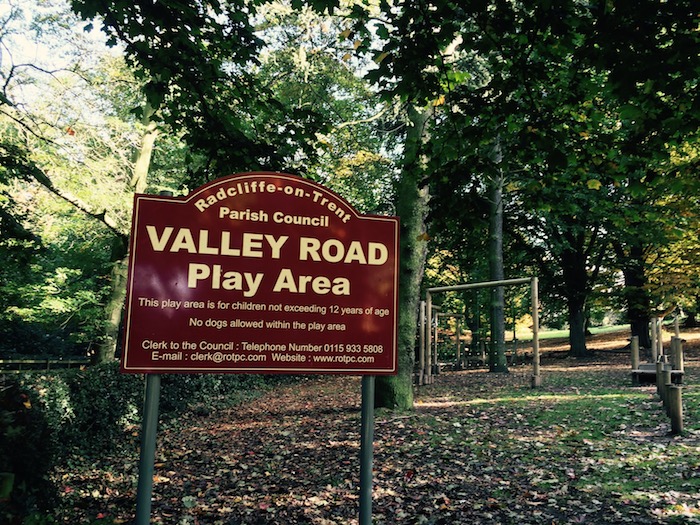
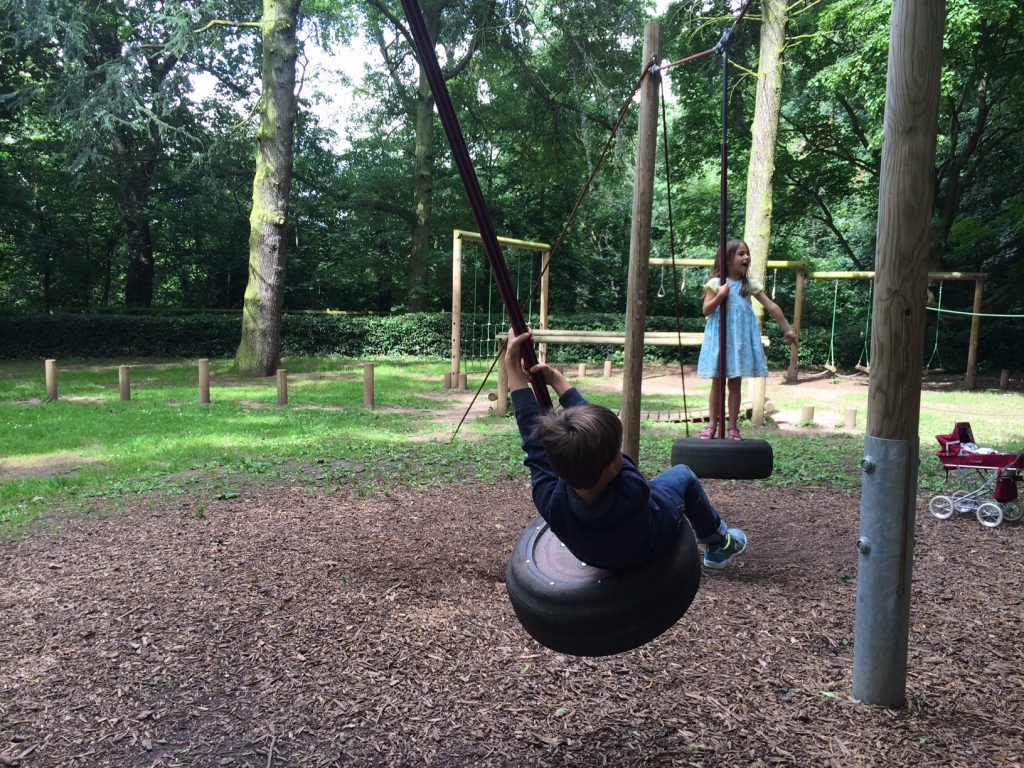
The Valley Road Play Area is situated off the cliff walk and contains a children’s playground. Radcliffe Parish Council enhanced the area recently with new play equipment for older children. Suspended tyres and a Trim Trail now stand alongside the pre-existing swings, seesaw and tractor for toddlers.
Walk to Shelford
Those wishing to continue beyond the tarmac path (which ends shortly after the Valley Road Play Area) can walk over the fields down to the grassy flood bank where sheep graze by the river and on to the small village of Shelford. The walk is approximately 3.6 kilometres (2.5 miles).
The Cliff Walk forms part of the much longer Trent Valley Way, waymarked between two southern starting points at Thrumpton and Attenborough. The walk ends at West Stockwith near Gainsborough, a distance of some 135 kilometres (84 miles). The Trent Valley Way connects with the Cliff Walk (from the direction of Holme Pierrepoint) via Wharf Lane in Radcliffe at the south western end (access by steps) or via footpaths to Stoke Ferry and Shelford to the north east. These access points are not suitable for buggies, wheelchairs and mobility scooters.For more information about the long distance Trent Valley Way walk, go to the Long Distance Walking Association at www.ldwa.org.uk
Riverside and Lily Ponds
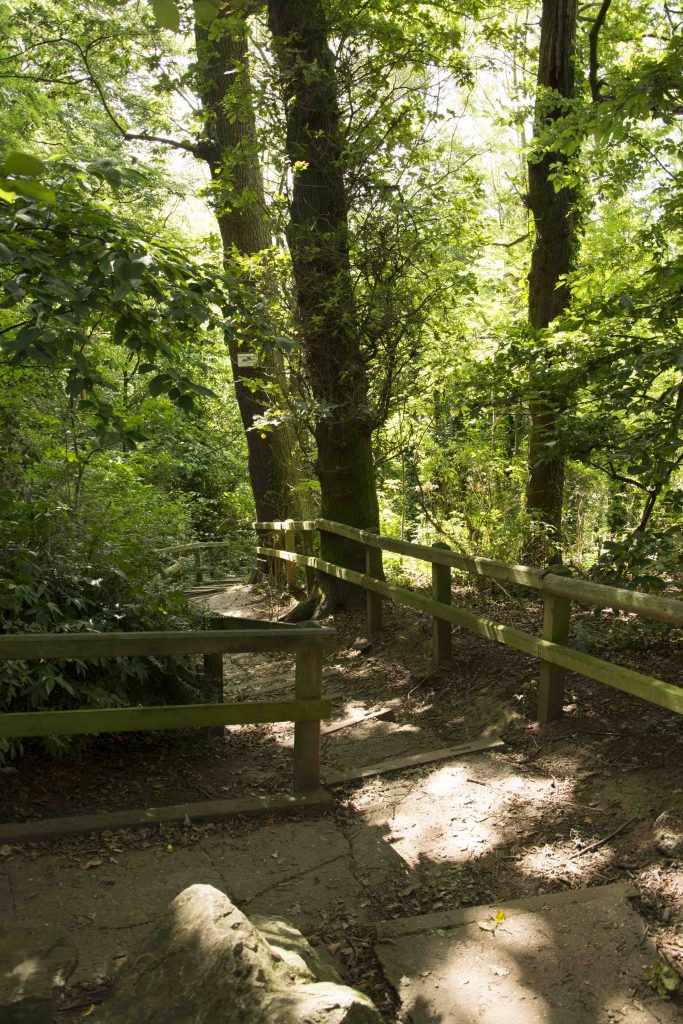
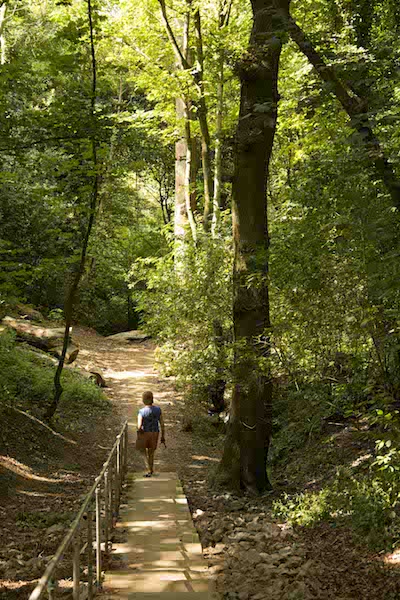
The Cliff walk can also be extended by descending to a 15.2 acre site of meadow and ponds running alongside the River Trent. There are two paths down to the site. Both are quite steep with steps (plus handrails); they are not suitable for wheelchairs, buggies or mobility scooters. One path descends from the Cliff Walk opposite the north eastern gate to the Memorial Park. The path is easily found on leaving the Park. The other path descends from the Valley Road Play Area and then runs along the bottom of the cliff for about 100m coming out by the weir. Turning left from the weir there is a choice of footpaths: to the left alongside the Lily Ponds or to the right along the river bank. These paths rejoin after about 500m at the foot of the path coming down from the Memorial Park gate.

The riverside is a place of dramatic contrasts from its surging weir to its tranquil ponds and peaceful riverbank scenes. The landscape abounds with willow trees, wild rose bushes, bulrushes and grasses. Bird spotters can find green woodpeckers, willow warblers, swifts, common terns and kingfishers among many other species. In 2013 Radcliffe Parish Council bought the plot of land known locally as ‘the Lily Ponds’ so that it would be protected and remain a beautiful natural area for the enjoyment of all. The Lily Ponds area is now a designated local wildlife site. The parish council is working in partnership with the Canal and River Trust, the Notts. Wildlife Trust, Rushcliffe and Nottinghamshire Councils and local volunteers to manage the nature reserve.
Radcliffe Conservation Volunteer Group
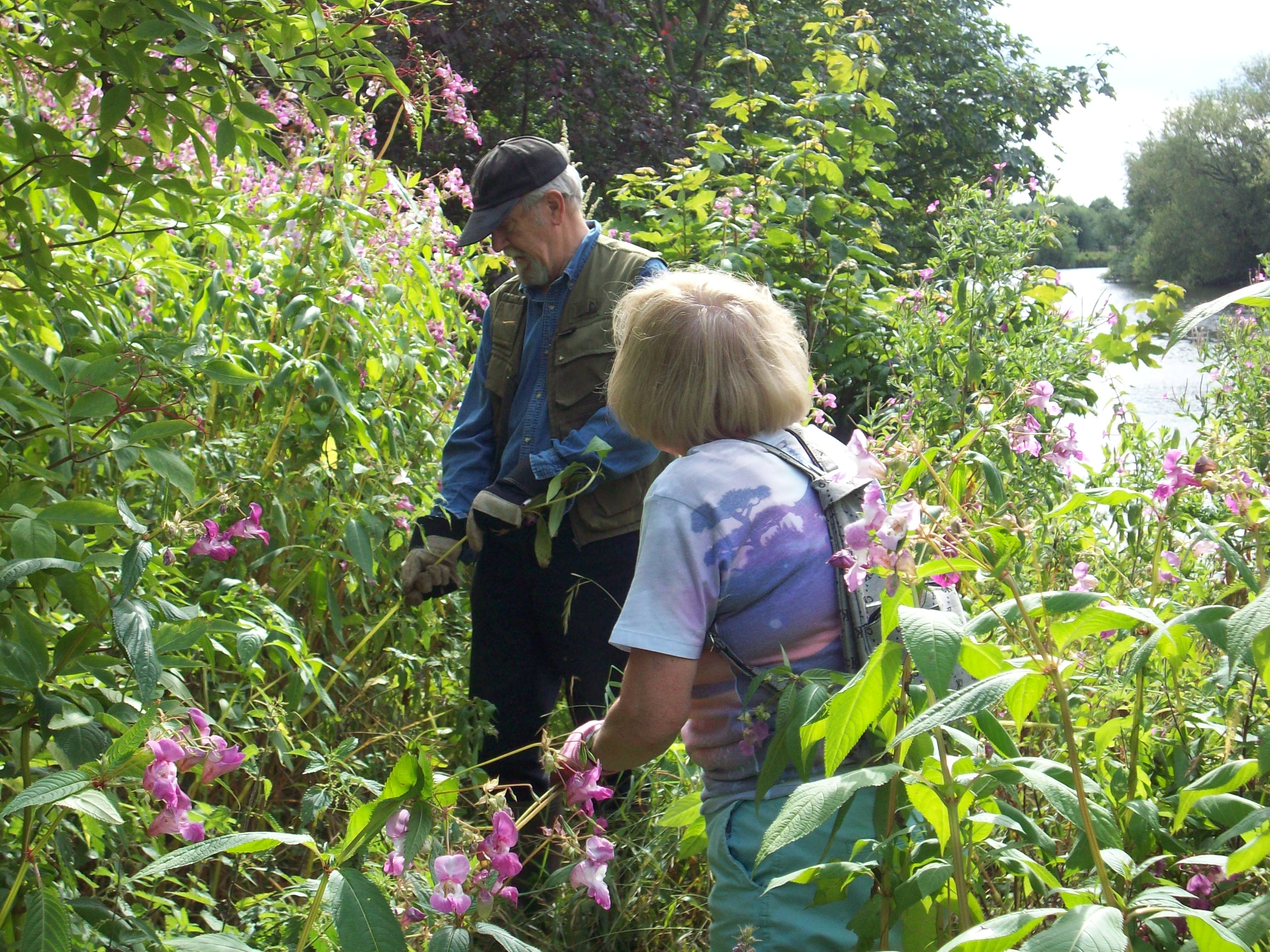
Radcliffe Conservation Volunteers have been working hard since 2015 to improve the cliffs and lily ponds areas. During the winter months of 2018–2019 the volunteers laid wood chippings on the path leading to the river at the bottom of Hollow Well steps. They also built two small fences from natural materials on the steps and paths where the ground fell away and cut up some fallen dead trees on the cliffs. Used fireworks left near the river on November 5th were removed by the group. Every year the conservationists remove litter and invasive Himalayan Balsam as well as cleaning ditches and gullies.
Author: Rosemary Collins

